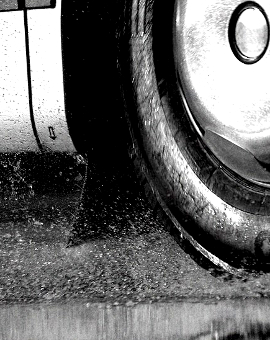Rubber road tech invented
 Australian researchers have come up with a new road-making material made of old tyres and building rubble.
Australian researchers have come up with a new road-making material made of old tyres and building rubble.
Construction, renovation and demolition account for about half the waste produced annually worldwide, while around 1 billion scrap tyres are generated globally each year.
RMIT University researchers have combined recycled rubble and rubber in a mix that is precisely optimised to meet road engineering safety standards.
Designed to be used for base layers, the recycled blend is more flexible than standard materials, making roads less prone to cracking.
Lead researcher Dr Mohammad Boroujeni says the rubble-rubber mix could deliver both environmental and engineering benefits.
“Traditional road bases are made of unsustainable virgin materials – quarried rock and natural sand,” Dr Boroujeni said.
“Our blended material is a 100 per cent recycled alternative that offers a new way to reuse tyre and building waste, while performing strongly on key criteria like flexibility, strength and permanent deformation.
“As we push towards a circular economy that can eliminate waste and support the continual use of resources, our recycled blend is the right choice for better roads and a better environment.”
In Australia, only 16 per cent of scrap tyres are domestically recycled. About 3.15 million tons of processed building rubble – known as recycled concrete aggregate (RCA) – is added to stockpiles each year rather than being reused.
In 2019, federal and state governments agreed to ban the export of certain waste materials, with the aim of building Australia’s capacity to generate high value recycled commodities and associated demand. As part of the agreement, whole used tyres will be banned from export by December 2021.
While the recycling of construction waste and scrap tyres is growing, both industries continue to produce significantly more waste than is currently reused.
The RMIT team has previously shown that its rubble-rubber blend performs well when tested for stress, acid and water resistance, as well as strength, deformation and dynamic properties. Its low shrinkage and good flexibility reduce the risk of cracking.
In a new study, researchers looked at how the mix would withstand the pressures of being driven over by countless vehicles over its lifetime.
Using special machinery to assess the blended material’s performance under frictional force, or shear stress, and compared different types of crumb rubber (fine and coarse) mixed into the RCA at different ratios.
The team identified an optimal mixture – 0.5 per cent fine crumb rubber to 99.5 per cent RCA – that delivered on shear strength while maintaining good cohesion between the two materials.








 Print
Print